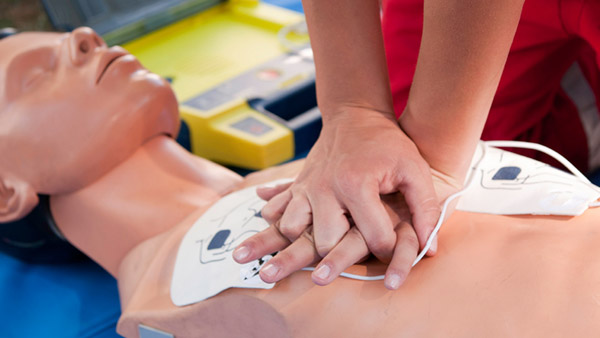Introduction
In our busy world, emergency situations can strike without warning. Whether it's a small injury, a medical emergency situation, or a life-threatening scenario, knowing how to offer first aid can make all the distinction. This is where a First Aid course enters play. Lots of people may wonder what they can gain from such training, and this post aims to clarify that.
By register in a First Aid and CPR course, you don't simply learn about bandaging wounds or doing mouth-to-mouth resuscitation; you equip on your own with very useful abilities that could save lives. So, exactly what will you learn in a thorough program? Allow's dive into the details.
First Help Basics: What You'll Find out in a Thorough Course
Understanding Initial Aid
What is First Aid?
First aid describes the first help provided to a person struggling with an injury or health problem till specialist clinical aid shows up. It includes different techniques and skills ranging from easy injury care to lifesaving techniques like mouth-to-mouth resuscitation (Cardiopulmonary Resuscitation).
Importance of Emergency treatment Training
Why Needs to You Take a First Aid Course?
Taking a First Help course is vital for several reasons:

- Confidence: Knowing just how to respond in emergency situations can infuse confidence. Life-Saving Abilities: The capability to do CPR or assist with choking can conserve lives. Career Improvement: Lots of professions call for qualification in very first aid. Community Responsibility: Being trained ways you can assist others effectively.
Overview of CPR
What is CPR?
CPR, or Cardiopulmonary Resuscitation, is an emergency treatment executed when someone's heart beat or breathing has actually quit. It integrates upper body compressions with rescue breaths to preserve blood circulation and oxygenation up until expert aid arrives.
The Framework of a Comprehensive First Aid Course
What Does an Emergency treatment Course Include?
An all-round First Help and mouth-to-mouth resuscitation course usually covers the following subjects:
Introduction to First Aid Legal and Honest Considerations Scene Safety Basic Life Assistance (BLS) CPR Techniques Choking Relief Wound Treatment Management Burn Treatment Managing Shock Recognizing Clinical Emergencies Using an Automated External Defibrillator (AED)Legal Elements of First Aid
Are There Legal Effects Associated With Giving First Aid?
Yes, supplying first aid does lug legal duties known as "Do-gooder regulations." These laws shield people that assist others in emergency situations, gave their activities are sensible and not reckless.
Scene Safety and security: The Initial Step
How Do You Make certain Scene Safety?
Ensuring scene safety includes analyzing the environment before coming close to the sufferer:
- Look for possible risks (web traffic, fire). Make certain it's secure for both you and the victim.
Basic Life Assistance (BLS)
What Role Does BLS Play in Emergency Situations?
Basic Life Assistance includes the principles CPR Course Morphett Vale of keeping life features up until further clinical assistance https://penzu.com/p/61be2a91833c128d arrives. This area covers vital abilities such as:
- Checking responsiveness Activating emergency situation services Performing top quality chest compressions
Advanced mouth-to-mouth resuscitation Techniques
What Are Advanced Techniques Covered in CPR Courses?
Advanced techniques may consist of:
- Two-rescuer CPR Use of barrier tools for rescue breaths Special considerations for babies and youngsters
Choking Relief Techniques
How Do You Aid Somebody That is Choking?
Choking relief includes 2 essential methods:
The Heimlich maneuver for adults. Back strikes and chest thrusts for infants.Wound Care Management
How Do You Correctly Take Care Of Wounds?
Effective injury management includes:

- Cleaning the injury with saline or tidy water. Applying antibiotic ointment. Covering it with sterile dressings.
Burn Treatment
What Are Effective Approaches for Treating Burns?
Burn treatment varies by level:
Cool the melt under running water. Cover it with non-stick dressings. Seek medical attention for extreme cases.Managing Shock
How Is Shock Recognized and Treated?

Recognizing shock consists of searching for symptoms like pale skin, quick pulse, or confusion:
Lay the person down. Elevate their legs unless there are injuries stopping this. Keep them relax till help arrives.Recognizing Medical Emergencies
What Types of Medical Emergencies Should You Realize Of?
Common clinical emergencies include:
- Heart attacks Stroke Severe allergies Comprehending these conditions aids you act quickly.
Using an Automated External Defibrillator (AED)
How Do You Use an AED Correctly?
Using an AED includes turning it on, connecting pads according to illustrations on the gadget, and following voice prompts carefully.
Importance of Continual Learning
Why Is Constant Knowing Important in First Aid Training?
Continuous learning ensures you stay updated on finest methods and brand-new procedures in emergency treatment care.
FAQs Concerning Emergency treatment Courses
What Is Consisted of in a Criterion First Aid Course?- A basic program usually covers basic life support, wound management, choking relief techniques, and lawful considerations.
- Most courses vary from 6 hours to 16 hours depending upon the deepness of material covered.
- Yes, upon effective completion of the majority of courses, individuals receive a first help certificate, which is typically legitimate for two years.
- Yes! Many companies supply on-line programs that give adaptable learning atmospheres while still being effective.
- Absolutely! Hands-on practice is vital for grasping skills like breast compressions and using AEDs effectively.
- Generally, there are no age limitations; nonetheless, participants need to be psychologically competent to learn these life-saving skills effectively.
Conclusion
Enrolling in a thorough emergency treatment course outfits people with vital expertise that can conserve lives throughout emergency situations-- whether at home, work, or out in public rooms! From recognizing standard life support procedures such as mouth-to-mouth resuscitation to finding out just how to manage wounds properly or acknowledge indications of shock-- these training courses give vital training that any person can benefit from!
As we browse through our daily lives full of unpredictability-- what far better method than preparing ourselves through knowledge gained from structured training sessions concentrated on conserving lives?
In conclusion-- if you're considering using up any kind of first-aid training-- never think twice! Equip yourself today with these effective tools because preparedness absolutely makes all the difference when every 2nd counts!